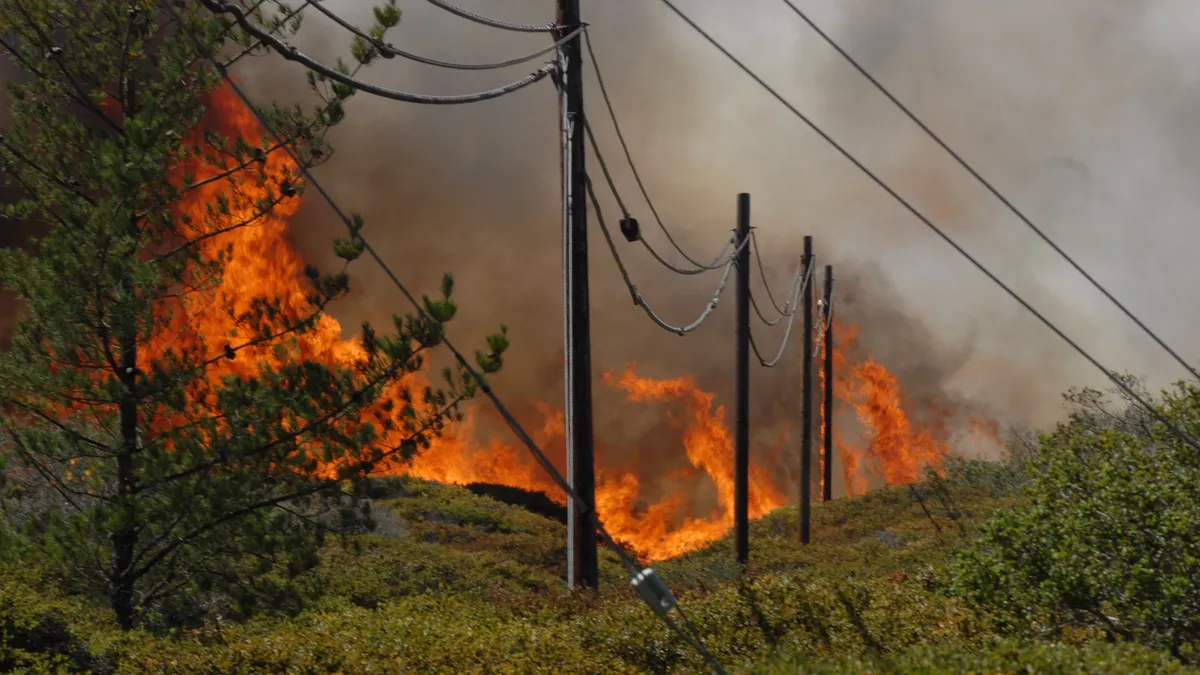Dive Brief:
-
Pacific Gas and Electric released financial documents Tuesday that experts say could be a warning that the utility will soon file for bankruptcy or face other serious financial issues due to escalating costs related to multiple California wildfires.
-
PG&E filed an 8-K document with the Securities and Exchange Commission disclosing it has withdrawn all of the cash available from its revolving credit lines, a move that often presages a bankruptcy filing. The utility could also be preparing for other situations, such as a credit downgrade or another state report linking its equipment to wildfires.
-
PG&E told financial analysts that its move is due to billions of dollars in debt coming due in the next few months, and not a preparation for bankruptcy, according to a note obtained by Utility Dive.
Dive Insight:
Companies use revolving credit lines to finance their operations, and financial experts say drawing all that debt down at once, as PG&E did Tuesday, typically means a firm is preparing for tough times.
“This is a surprising move and it is potentially consistent with a bankruptcy filing,” said Michael Wara, a professor at Stanford Law School, “but there are other potential explanations that are also possible, especially under the circumstances in which PG&E finds itself.”
Companies preparing for bankruptcy often draw down their debt to avoid more onerous financing terms through the bankruptcy process, Wara said. But PG&E could also be putting cash in the bank to insulate itself from other financial situations.
One option is that PG&E is preparing to have its credit rating downgraded to non-investment status, Wara said, which would exacerbate its already limited access to capital markets. It also could be anticipating that California fire authorities will find its equipment responsible for the Tubbs Fire, which killed 24 people last year.
State officials have already found PG&E wires responsible for 16 fires last year. On Monday, California utility regulators announced a new investigation into PG&E’s involvement with the ongoing Camp Fire, which has killed 42 people so far — the worst in state history.
In June — before the Camp Fire outbreak — PG&E officials told state lawmakers that fire expenses could force the utility into bankruptcy or compel it to break the company into several pieces. Financial analysts say those are just two options of many that could be foreshadowed by the debt drawdown.
“They've shored up and essentially enhanced their financial flexibility and I think given the situation that's occurred there it's not entirely surprising,” said Paul Patterson, an analyst at Glenrock Associates, a financial research firm. “Whether that means they are going to take additional action remains to be seen.”
“They’re in a situation which is pretty extreme,” he added, “and I think it behooves them to take action to increase their financial flexibility.”
PG&E did not respond directly to questions about the debt drawdown, saying in an emailed statement that the "entire company is focused on supporting first responders and assisting our customers and communities impacted by the Camp Fire."
However, in a note to clients, Julien Dumoulin-Smith, a Bank of America-Merrill Lynch analyst, said the utility assured his firm that it is not preparing a bankruptcy filing.
“We had a chance to catch up with the company,” Dumoulin-Smith wrote, “noting that this isn't an indication of pre-filing for bankruptcy as they have $800 [million] of short-term debt coming due over the next three months as well as historical debt maturing in excess of $1 [billion].”
“However,” the analyst noted, “the reality is that this is very alarming given the timing as we don't know the specifics of the situation.”
If PG&E does file for bankruptcy, it would be the second time the company has been through the process in less than two decades. The company last emerged from bankruptcy almost 15 years ago following its filing during the California energy crisis.













